Of course Drake would claim victory in his Rap “beef” with Common on the same day Kendrick Lamar lyrically challenged seemingly every emcee in Hip Hop. The Pageview Gods wouldn’t have it any other way.
“That was the first time someone called me out personally,” Drizzy explains in the upcoming September issue of XXL, describing his tactical response to Common’s “Sweet” on Rick Ross’ “Stay Schemin.” He continues:
“First of all, I made sure it would run in the club because that’s more painful than anything. As opposed to just being on a blog, I wanted to be on a record that you would have to stand around and hear every night for months. That was my whole strategy going into that. Instead of sounding hurt and malicious, I wanted to sound fun, get my shit off. Like I said, if it happens again, not that I want it, not that I welcome it, but I’m ready. I really enjoy writing bars, man. I’m not nervous about anybody saying anything to me.”
For someone who once “laced” his self-loathing smash—“Successful”—with “Diss me and you’ll never hear a reply for it,” that’s some surprisingly evolved schemin’. Back in 2009, Emo-lines like that smacking bellies with sparse, nap time-type production and Keith Sweatish crooning were part of what made it so easy to hate-on Drake. In a sense, he became a pseudo Exhibit A as to why Golden Era nostalgics felt disconnected from contemporary Hip Hop. In the most competitive musical genre the modern world has ever known, a newly exalted artist unabashedly refusing to respond to on-wax competition felt much more than cowardly. It felt disrespectful—almost as if the Canadian Zack Morris was bastardizing the core of the culture responsible for his rapidly rising income. That bar amidst a ball-tickling industry at large made it even easier to commiserate with Nas’ charge that Hip Hop was dead.
Analyzing Drake’s Conflicts With Aristo & Big Page
Now, a quick Google search puts Drake’s position into perspective. Before breaking big with So Far Gone, the Young Money-lyricist was at the center of at least two notable conflicts with fellow Toronto rappers—one with Aristo and another with Big Page.
The latter includes all of the indicators of legitimate beef: allegations of a stolen regional hit (“I’m Still Fly”), broken friendship, nightclub altercations, robbery, police investigations, snitching accusations, award show confrontations. “I feel unsafe in Toronto at all times,” he told The New York Times in 2010. “I’m a one of one, there’s no one else you can hate as much as me if you hate money, or you hate success.”
The former, on the other hand, includes all the indicators of classic Rap “beef”: two or more cats rapping at each other with little to no real world repercussions. In the aftermath of the Aristo battle, Drake gushed over his triumph on Flow 93.5 FM’s OTA Live radio show.
“It was good riddance. It was lights out. It was a body. When it comes to trying to check Drake, it was good riddance” he gloated before continuing in a fashion similar to that in the aforementioned XXL interview. “Rap is something that I’m just confident [in]. I feel good here. I’m not scared. I’m not scared to go at anybody if that’s where you want to go—only if it’s going to be good. If it’s not quality…I’m a busy dude. I’m not going to take the time. But if it’s somebody I feel like needs to be addressed then definitely I’ll do it and it’s calculated, too. The things that I’m going to say are calculated.”
50 Cent, Ja Rule & The Risks Behind Rap Beef
A privileged upbringing and a starring role on a teen soap series will plaster a bulls-eye on the back of any aspiring emcee—even in no-guns-allowed Canada. So it’s difficult to say Drake was afraid of competition by openly refusing to reply to jabs from arguably envious also-rans. Most likely he was conflict fatigued, especially after haphazardly playing a game of fatalism that many still fail to acknowledge. At best—at least for an artist swimming in a monopolized music industry—beef equals short money. At worst: life threatening. For a newly signed rapper gaining notoriety or otherwise, neither is acceptable. And for a corporation spending millions manufacturing the next global Hip Hop icon, backing Ja Rule Part Deux is financially off the table. There’s too much at stake for too many stakeholders.
Rap beef became commercially risky by the mid-2000s. 50 Cent was initially able to pimp the ploy farther than possibly anyone in Hip Hop history. But after masterfully bait-and-switching Jeffery Atkins’ career, latter bouts with Nas, Jadakiss, Game, Cam’ron, Rick Ross, all landed somewhere between flaccid and gimmicky. Not only did each new release following his multiplatinum debut, Get Rich Or Die Tryin’, come complete with a fresh new target; not only did each move fewer units than the previous, but collaborations between the East Coast’s most powerful collectives of the era withered under the weight of an us-versus-them mentality. It was either Dipset or G-Unit, for example. Few East Coasters not named Jay Z were able to maintain national relevance throughout the aughts.
Snoop Dogg was so concerned with the lack of unity amongst West Coast emcees following Gangster Rap’s prominence in the 1990s that he convened the Protect The West summit in 2005 in attempt to quell the conflict. “I felt we should come together as one, organize, unify and start making records and be about a cause,” said the artist now known as Snoop Lion, according to MTV. “It was me relaying to them that banging in the business ain’t making us no money. If we come together and move as one unit, money will be there and the opportunity to shine will be there.”
While the East Coast bickered and the West Coast rebuilt, artists from the South capitalized off of a comparatively unified front, commercially dominating the decade. Major names from below the Mason Dixon line rarely squabbled to the point of no collaboration. Every emcee seemed to land a feature on every other emcees’ mixtape. Southern drawls ran the consolidated airwaves. Talent eventually came secondary (if at all) to potential brand equity. Artists and labels en masse were no longer in the business of selling lyrical skill. “Cool” seemed to be the only product left on the assembly line in this Industry Of Cool. As a result, Golden Era Hip Hop competition took a backseat to the prospect of even bigger pimpin’. If success in the 90s was about being the best rapper, then in the 2000s, it was about being the wealthiest.
“I’m walking on South Beach the other day, right—the Memorial Day Weekend shit thing. Yeah, so, they got a nigga coming up to me with a video camera, right. You know, muthafuckas come up to me with cameras everyday, right, so I don’t be trippin’—all day, every day, you know what I mean. You know what this nigga asked me? ‘Yo, can I battle you on camera?’ I was like, ‘Dog, how much we gonna make for this?’” – Lil Wayne, “On Tha Block #1,” Tha Carter II
Hip Hop’s Current Fascination With The 1990s
In his 2012 interview with HipHopDX, the wise sage George Clinton dissects the transition from Rock & Roll to Funkadelic. As he describes, Rock stars like Jimi Hendrix pushed the medium so far past its simplistic, “Tutti Frutti” origins that the evolutionary cycle forced the genre back to it’s basic beginnings. Clinton elaborates:
“Then it was time to go back and start all over again. Then we come along with “Whoa Ha Hey,” just chanting. We took ours all the way to Funkadelic and sophisticated and had to go back. So when we created “Atomic Dog” we just said, ‘Fuck it. Let’s not wait for it to get slick. Let’s just start the shit off. Let’s start this shit off slick and still be what Hip Hop looks like it’ll become. “Atomic Dog” is the beginning and the end of that shit.”
Hip Hop is looking real 1990s these days. Heads are rocking high top fades and Africa medallions again. All-over prints are back in fashion. Scores of Fresh Prince Of Bel Aire look-a-likes are roaming cities nationwide. Action Bronson rhymes like Ghostface Killah. Each member of the A$AP Mob has “A$AP” in their moniker similarly to how each member of Bone Thugs-n-Harmony has “Bone” in theirs. And most interestingly, over the past few years, the next generation emcees have inched into the mainstream conversation with a renewed lyrical focus, eschewing the simple bromides that littered the last decade for increasingly sophisticated stanzas more representative of the decade before—the Golden Era. As “Uncle” George Clinton would say, things been getting slick.
Rittz Says Rap Is “Competitive” & Glasses Malone Says “Lyrics Sell”
“People are rapping again, man,” Rittz told DX in 2012 when asked whether Hip Hop was still competitive. “I woke up one day to reality. I’m older. I’m over 30. I’ve always been listening to the radio and what was hot. I’m just from a different era. I woke up to the Internet one day—and to what was really going on—and I was like, ‘Wow, there’s some really good rappers now.’ Before there was a handful. There was a lot of garbage. There are a lot of talented rappers right now. So yeah, it’s super competitive.”
Glasses Malone agrees. “Everything else don’t sell. Lyrics sell,” he told us in 2011 in response to the same question. “That’s why a nigga like Lupe Fiasco can come back after years and years and years and come back and have as much hype as he did when he first came out, if not more. Because at the end of the day, fuck all of the hype. When you get through all of the fuzz and all of the bullshit, lyrics is what sells. Period.”
B.o.B. Says Rap Has “Evolved And Now Circled Back”
“Really, I think Hip Hop is definitely becoming more defined and recognized,” B.o.B. told DX this past April when asked if a 90s aesthetic has returned to the culture. “It just evolved and now circled back around. Now people, people just want to stand out and make a statement. [Now it’s like], ‘Who’s going to say some shit?’”
“And that goes for Jermaine Cole, Big K.R.I.T., Wale / Pusha T, Meek Millz, A$AP Rocky, Drake / Big Sean, Jay Electron, Tyler, Mac Miller / I got love for you all but I’m tryna murder you niggas / Tryna make sure your core fans never heard of you niggas / They don’t wanna hear not one noun or verb from you niggas / What is competition? / I’m tryna raise the bar high / Who tryna jump and get it? / You better off tryna sky dive.” – Kendrick Lamar, “Control”
The point is this: Kendrick Lamar stood out and made a statement this week. His verse on Big Sean’s “Control” is compelling for numerous reasons, but only important for one.
Sure, he named himself King of both coasts, comparing himself to Tupac Shakur while quoting Kurupt, willingly placing a lyrical bulls-eye on his own back. But what does that truly mean in an era where Mississippi rappers sound like Queens rappers and Harlem rappers sound like Houston rappers? Do regions that fail to rep for themselves deserve to be upset? Do regions matter at all when everyone is on the Internet?
Sure, he dropped a ton of highly relevant names in a row, challenging everyone to step up the competition, reminding all that Hip Hop at it’s core is a competitive sport. But Hip Hop’s been growing increasingly competitive for years now—word to Lupe “One-Nigga-Wu-Tang” Fiasco. K. Dot’s approach wasn’t new to the age. Hell, it wasn’t even new to his catalog. He already copped to killing your favorite rapper on “Rigamortis.”
Kendrick Lamar’s “Control” Verse Was A Call To Arms
Kendrick’s “Control” verse is important for one reason only: the response. This unassuming kid from Compton, California rocking one album, a mid-top fade and a muted public persona kicked one verse and everyone in Hip Hop reacted in unison.
Seemingly every emcee with a mobile phone dropped an opinion or rhyme. Diddy, 50 Cent, Bun B, B.o.B., Big K.R.I.T., Action Bronson, Fabolous, Freddie Gibbs, Talib Kweli, Trinidad James, Crooked I, Pusha T, Joel Ortiz, Prodigy, Los, Lupe Fiasco, Cassidy, Iggy Azalea, Mac Miller, Royce Da 5’9, Slim Thug, Joey Bada$$, Killer Mike, Meek Millz, Tyga, Norega, Consequence, etcetera, etcetera, etcetera, etcetera, etcetera. It’s like an entire iPod catalog took time out to take to Twitter. The verse was so impactful that even artists not mentioned on the song started sniping at each other.
This wasn’t a diss track. This wasn’t antagonizing. This was a call to arms; a call to take Hip Hop seriously. It’s a call to fight for what it is we all care about before we stray too far from what it means to own something that literally changed the world.
“This is King Kendrick Lamar,” raps the week’s most talked about rapper on “Compton”, the final song on his classic debut album good kid, m.A.A.d. city. Who knew he meant that literally?
Justin “The Company Man” Hunte is the Editor-in-Chief of HipHopDX. He was the host of The Company Man Show on PNCRadio.fm and has covered music, politics, and entertainment for numerous publications. He is currently based in Los Angeles, California. Follow him on Twitter @TheCompanyMan.
RELATED: Big K.R.I.T. Responds To Kendrick Lamar’s Verse On Big Sean’s “Control”


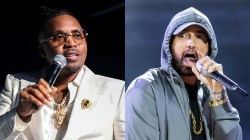
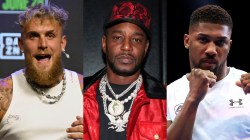

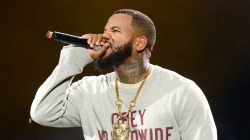
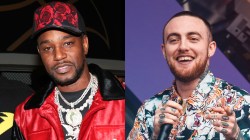
![Method Man Admits He Didn't Like Drake's "Wu-Tang Forever": "I [Wasn't] Getting On That"](https://hiphopdx.com/wp-content/uploads/2025/12/method-man-drake-wu-tang-forever-remix.jpg?w=250)
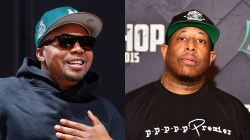

im down for competition
time to raise the bar
rappers got to try now
all about beats rhymes and cuts
40 years later and the people demand bars
the jig is up
its about time.
Great article…especially the last few sections.
Well written and spot on! Quality is needed-in other words, steppin up the bar-and fierce competition breeds QUALITY. 🙂 Is that true? Just look at the laws of economics. I’m stoked. Now the hip-hop market recession is over. Kendrick dropped the stimulus!!!
EXACTLY!
One thing is for sure pertaining to the buzz Kendrick has created… if he was not as advertised no one would be talking about it. The kid can spit and he does it as good as any of the new artists and is on his way to being added to the same status as some of the legends in due time if he keeps it up. That is why there is such a response… that is why him calling himself King is such a threat to those from NYC that felt the need to pick up a mic. As a fan of the music I win… we all do.
shut up you faggot lol
good beats, good rhymes, competition and there we go – good hip-hop 😀
I like the tone, vibe, and information in the article, but the writing and word usage is poor. The editing seems rushed as well, if edited at all. To improve this, all it would take is an editor with an above average vocabulary to liven up the writing and change a few words or usage, but at the sametime staying within your readers range. Just a suggestion. Like the review in all.
THIS IS FOR BLACKS
Your guise of intelligence is showing its cracks…..
^^ LMAO had me dying w/ that one
People are fuckin mindless drones following any dumbshit on TV and the Radio and this is why this garbage is relevant in the first place. People don’t see how retarded this is.. First off Kendrick Lamar is far from the best ever in the gam #1, #2 all of these other artist givin props for nothing when all he did was named a bunch of artist in a weak ass verse with no substance are pure dick riders! Point blank who the fuck is he? Nobody when it comes to detating anything in Hip Hop especially when it comes to addressing new artists when you’re a fuckin rookie yourself! SMH I’m a leader and never was a fuckin follower! Yall are dumb!
Preach!!
Verse was great. Who said he thought he was the best ever??not sure what leadership has in reference to this hard verse.But it’s your brain
CO-SIGN!!!
Cosign, people be riding whatever marketing tactics and debates that these rappers be having. It’s as if the perception is more important than a damn skill. The verse was ok!! Even worse is when so called “Hip-Hop” media blows this shit up!!! Got damn
Jay Elec’s verse was better lyrically, he just didn’t name any names. Hell, he didn’t need to.
Listen man I’m not dickriding anybody. Thing is what made K.Dot’s verse great was his flow, and a little above average lyrics. Wasn’t his best but I got people hype. Everybody else in the song did their thing and was good. I personally think Jay and K.Dot were equal. Only reason why Jay Elec didn’t get as much attention as others is because his flow just wasn’t as raw, and he didn’t shake up the game Like K.Dot did with talking bout the East Coast, and naming rappers.
The MTV friendly shit is what the fuck Kendricks crusading against with this verse, your one of those people who thinks their deep just cause you call everyone a drone and you listen to __________ (fill in the fucking blank chino xl elzhi rakim krs jedi mind big l). People liking Kendrick isn’t a product of MTV or the radio he got his buzz through his lyrical content point blank. If you’re not feeling the verse you’re not reading between the lines… peep the reaction what does that tell you? Kendricks got the bully pulpit in hiphop and he can singlehandedly steer the conversation in whatever way he wants
@Oz. F: It’s the reaction to the verse that is mindless, not the verse itself. But, the verse itself was below average, by any good lyricists standards K. Dot’s included. I’ve been a fan of Kendrick’s since “Overly Dedicated”. But you, my friend are a dickrider(sorry). First of all, you talk about Kendricks verse as if its effect was intentional. Understand, “Control” was Big Sean’s song. A song that didn’t even make his album! A throwaway that was used to generate buzz for him, but just ended up spiking K.Dot’s sales. This so called “Contreversy” was created by social media clowns misinterpreting lyrics that had no ill intent. @DJBoy’s issue is the same as mine. Pole jockeys like yourself who feel like this one verse which isn’t even Kendick’s best, is somehow going to revolutionize hip-hop. I promise, it won’t even budge the game.
Wack, all of this shit is a marketing ploy that the media is in on. Phil Jackson responding to someone who is not even platinum in the U.S. yet? Every single outlet giving him good scores on his album? When did everyone start to think alike? I am obviously talking about Lamar. At the end of the day I like Lamar. I enjoyed his album, but this is not about how good hip hop currently is or how the quality of rap music and rappers has improved. It is about marketing these new guys as some type of change and they have not proved to be that. This has been going on for the last 3 years or so to be honest.
Kendrick’s Good Kid MaAd City did got Platinum…
http://www.complex.com/music/2013/06/kendrick-lamar-platinum-plaque-good-kid-maad-city if you didn’t know…
^… Two weeks AFTER “Control”.
I’m laughing at the fact that Drake actually thinks he was in a beef. It never seizes to amaze me how sheltered this guy is.
l uuuuuuuuuuufuck uuuuuuuuuuuu ill kil
How to get rapper’s panties in a bunch 101….
Boom….. goes the dynamite.
Straight he’d been foreboding it I mean, “I fucked up the rap game & UOENO it”
I’m usually not even up on new tracks but with all the hype I had to check this one out. It was dope, Kendrick went hard. Thing is, I don’t seem him hitting the #1 hip-hop spot just because he has the wrong voice, look, lacking in charisma, etc. I mean, GKMC was a quality, deep album because of the concepts and it made you think, but not because he went HARD on there exactly. We’ll see what he does in the next 5-10 years though.
Part of his appeal is his unassuming demeanor. Its like he’s forcing you to judge him on his content.
anyone that isn’t excited about what K.Dot did for hip hop on that track is retarded. And to the dude who called him a “rookie”.. he released his first full length mixtape in 2003.. hardly a rookie
King Kendrick boiiiiiiiiiii!!!!!!
Competitive? For who exactly? Isn’t it always amazing how the media releases articles full of bullshit and no facts behind it. Most of the dudes on this list will get chewed up. People seem to think if you’re on the radio it means you’re good. That idea went out the window after the 90’s. Since then hip hop on the radio has been specifically designed for dumb asses and females. So what the fuck competition is there going to be for battle rapping, when the current catalogue of rappers are garbage.
Fall the fuck back half of these cats aren’t even on the radio. KRIT TYLER MAC JAY ELECTRON and even PUSHA’s solo acts aren’t on the radio (numbers on the board)
King Los response >>>>>>>>>>>>>>>>>>>>>>>>>>>>>>>>>>>>>>>>>>>>>>>>>>>>>>>>>>>>>>>>>>>>>>>>>>>>>>>>>>>>>>>>>>>>>>>>>>>>>>>>>>>>>>>>>>>>>>>>>>>>>>>>>>>>>>>>>>>>>>>>>>
Dear Rappers actually hurt enough to respond to Kendricks short lyrical slaughter of your fellow brethren, RIP.I haven’t heard a quality response or even a contender for Kendrick. You guys should be asking to work in the studio with him, so you can see how he constructs his music. ———-NAME ONE NY RAPPER THAT IS A CONTENDER TO KENDRICK RIGHT NOW————–pause. THERE ISN’T ONE, TOO BUSY Throwing college tuition to strippers at the clubs, GET IN THE STUDIO, STOP TURNING Up, START CREATING, RAP WASN’T ALWAYS JUST FOR MONEY YOU TURDS, all the money in the way, you lose sight of your craft and end up settling for creating shit tier music that will only be played on the gay ass radio and stupid clubs, you’ll get paid, but you’ll never feel as accomplished as Kendrick, he had a plan and stuck to it, never letting money take the course on his career, TAKE NOTES. Back to Control Verse….KENDRICK RAPPED 4 Bars AND THEN THREW ANOTHER IN WITH THE KING OF NY LINE. YOU ARE COMPARING A 3-6 Minute song with 4 bars….I GUARANTEE IF YOU GAVE KENDRICK 1 DAY 1 INSTRUMENTAL and a 3 Minute limit for his track,you’d probably fall victim to lyrical assault and pass out,3 MINUTES OF LYRICAL SLAUGHTER to your dome piece. These mediocre rappers can’t stop reaching for the limelight. Papoose was invited onto the stage at NY SummerJam by TDE out of kindness, and he starts playing games, calling out the whole crew ALL OVER 4 BARS…Sensitive much?Papoose is just being weird…maybe Papoose is just butt hurt his wife is in Jail and decided to take his anger out on the Rap King himself. They DISS AND DISS AND DISS, YET THEY NEVER FOCUS ON THEIR OWN GOD DAMN CRAFT…. THEY STILL SUCK AFTER THE DISS. DISSING KENDRICK ISN’T GOING TO MAKE RAP EASIER, ITS NOT GOING TO MAKE YOU SUPER LYRICAL, ITS NOT GOING TO GUARANTEE A MAGIC CARPET RIDE TO THE TOP, GO PUT IN WORK AS KENDRICK DOES.CARVE YOUR OWN LANE YOU MEDIOCRE RAPPERS, KENDRICK DID, YOU CAN TOO! Jesus. Fuck Molly Rap, Fuck Club Rap, BRING SUBSTANCE BACK INTO RAP. I’ve had it with these rappers, how the fuck y’all hating on TDE and Kendrick when he’s doing his own thing producing some of the best HIP HOP in years… hes riding in his own lane, while the rest of rap peddles backwards trying to catch up. Stop rapping “Off-top” on shitty bass heavy beats while blabbering about TURNING UP and TAKING MOLLY IN DA CLUB. ITS BORING. STOP TARGETING TEENAGE GIRLS WITH YOUR MUSIC AND EXPAND YOUR HORIZONS. IM DONE. GONNA GO DROP 10 G’s on a new keyboard. P.S: TDE DOESN’T HAVE TO RESPOND, THEY ARE ALREADY SHITTIN ON THE BUMGOBLINS of RAP. NO NEED TO SIFT THROUGH SHIT, IF YOU KNOW ITS SHIT. Kendrick is not the ENEMY, HE’S THE DEFIBRILLATOR sent BY TUPAC and Notorious(They reconciled in heaven.) TO REVIVE RAP FROM THE PITS OF CHINGYS BASEMENT BEFORE ITS TOO LATE………
BLAH BLAH BLAH You actually think anyone read what you tried to type?? These new rappers ain’t got sjit on cats like KRS-ONE ETC….
You dick ride KRS-1 so hard, just read the paragraph you fanboy, i hate people like you, close minded morons who think their #1 is an allmighty god. HE ISN’T. NIGGAS IS SCARED OF TDE, THEY ARE ACTUALLY RAPPING ABOUT THINGS OTHER THAN FUCKIN BITCHES AND GETTING TURNT UP..Also, as an intelligent human, i dont revel in the past, current events and spontaneity release tension from your body. You should try it sometime. Blow jobs work too, but your last blow job was in 1976 you old geezer. Sucks using a fleshlight don’t it time traveler?
Get off Kendrick’s dick, royce da 5’9 will slaughter that nigga
This dude Jae is a clown! A pretentious newbie who knows nothing about the culture. If anyone on TDE is your #1, it’s you that’s the fanboy… Fag
Not a bad article. I would only amend the Drake comment about “a privileged upbringing” to “the perception of a privileged upbringing” because thats what it really is. The whole Drake characterization of a rich kid is a myth that the purists want to cling to. I wish people were better educated on money/$ in Canada. Drake grew up around Weston -far from rich – and then, rented a half-a-shitty house in Forrest Hill. Forest Hill aint the hamptons. I garuntee that the average rents are lower than most parts of Harlem or somewhere like Fort Greene/Clinton hill Brooklyn or long island. And Working on a canadian TV show is not rich – it will put you around a waiter salary. Yeah, Canada is safer than the USA with less murders etc but most other crime activity like say drugs is the same and less admonished. Few people have both Canadian and US experience so it’s hard for people to really get the difference but in general, wealth in Canada just doesnt compare to the wealth in the USA. He didnt grow up like some kid from Beverly Hills or even Long Island. I garuntee both Guru and Ice Cube grew up with more advantages. But these hiphop purists romanticize the past, so there it goes..
If you think Brandon`s story is really cool,, three weeks-ago my moms boyfriend basically got a cheque for $8482 sitting there an eleven hour week from there house and they’re buddy’s sister`s neighbour did this for five months and recieved a check for more than $8482 parttime from there computer. follow the information from this site, ——> WEP6(dot)COM
first off dumbass..when he lived in forest hill the property was and i think still owned by his uncle, who is a millionaire who operates a business. Did you know Drake got money from the business to go to “music school”?
Everyone saying this is a marketing ploy is confusing marketing with branding.There is no album coming out any time soon for him to market he’s solidifying his brand (apparently disowning molly culture is part of his brand). I for one thought it was getting pretty corny that this wave of new school cats were so friendly with each other on some “yeah yeah we just gettin this money” shit. They all feature on eachothers shit gettin too comfy and the collective material released starts sounding lazy. Kendrick took the initiative and became the catalyst thats starting this chain reaction. People who dont feel the verse aren’t reading between the lines, Kendrick has got the bully pulpit and he knows he can steer the hiphop conversation in any direction he wants. lets be glad this is the route he chose
the right route
Kendrick & Dr. Dre like 69 each other
Drake watches in the corner while jerkin it
Kendricks pussy, talking bout people are impressed he dissed lil sean on his own record, fuck boy, Lupe dissed Obama at his OWN inauguration, weak ass corporate sponsored rappers
you guys are gay. who gives a fuck about all of this shit, just enjoy the music. fuckin nerds.
This guy’s a major faggot.
Both u guys are…
its not competitive or hip hop its straight up commercialism. fuck this pop icons with nothing to say. they’re not poetic and hold no substance. anyone who disagrees is a cock rider or uneducated
says the blogger with lady gaga as his username.
if you were born after 87 you have nothing worthwhile to add to the hip hop conversation!
Competitive? The new school are a bunch of soft ass puppets. The production is weak and they all lack lyrically and substance wise.
Youre listening to commercialism
KENDRICK IS SO SMART …DRAMA BOOSTS UP THE SELLS !!!!
Only thing these pussy niggas compete in is who pants the tightest.
GREAT WRITTEN ARTICLE I THINK LYRICS ARE COMING BACK 2004-2008 WAS THAT DANCE SHIT BUT SO WAS THE LATE 70s SO WE GETTIN TO THAT ERA WHERE LYRICS WILL BE BACK THANKFULLY!
Kendrick..is brilliant…calling out lyrical rappers..we need change…give us some new listening…
Both of you are…..